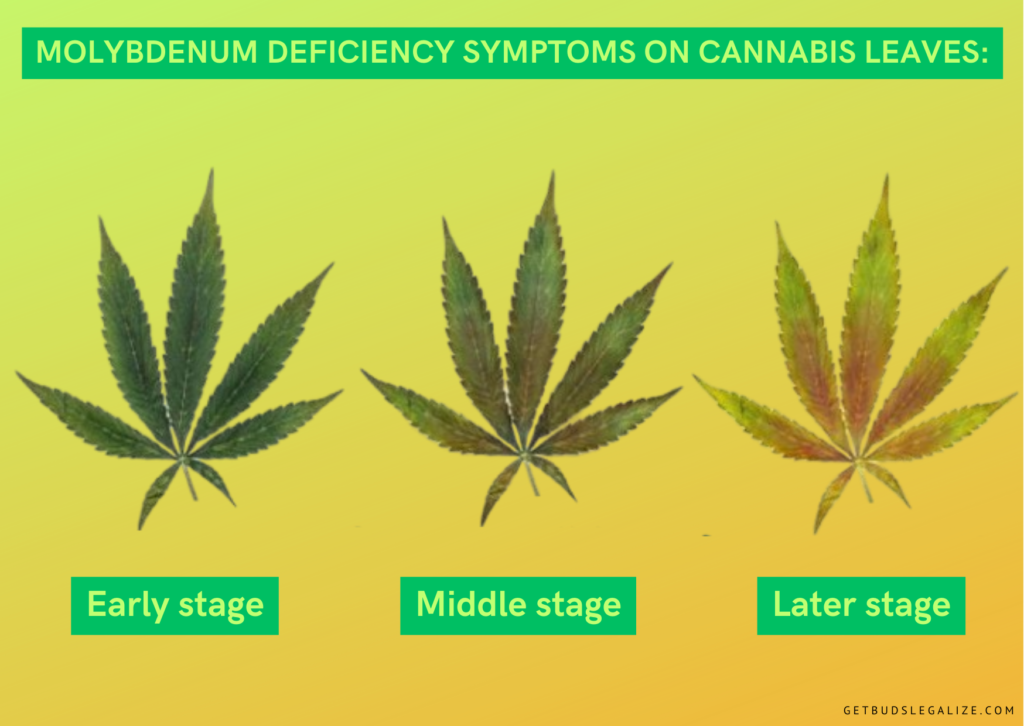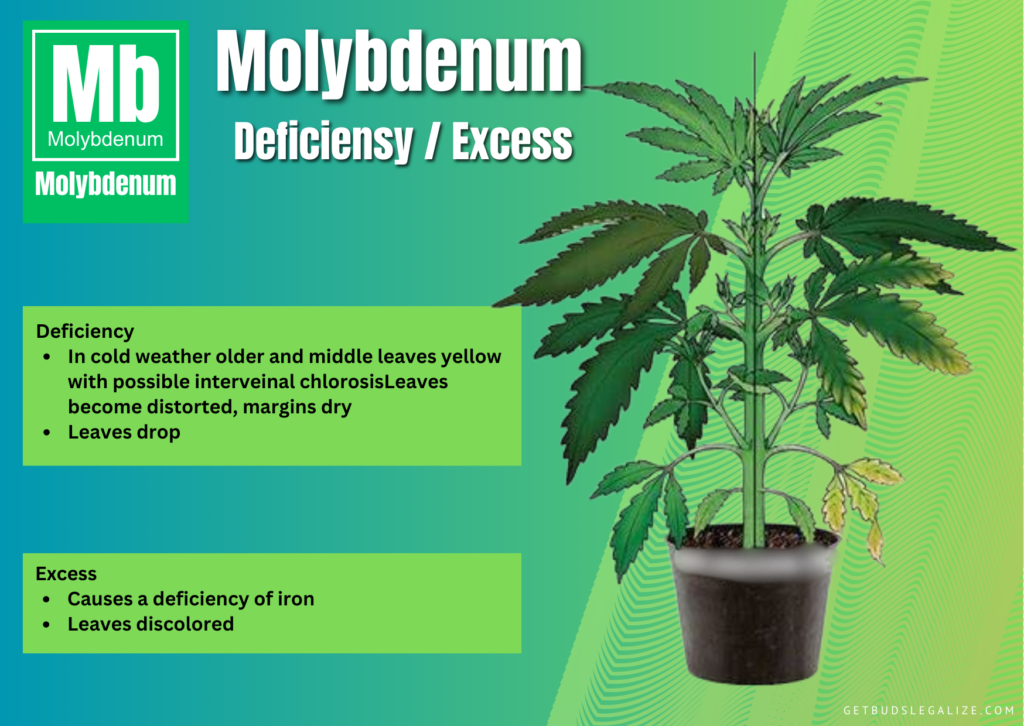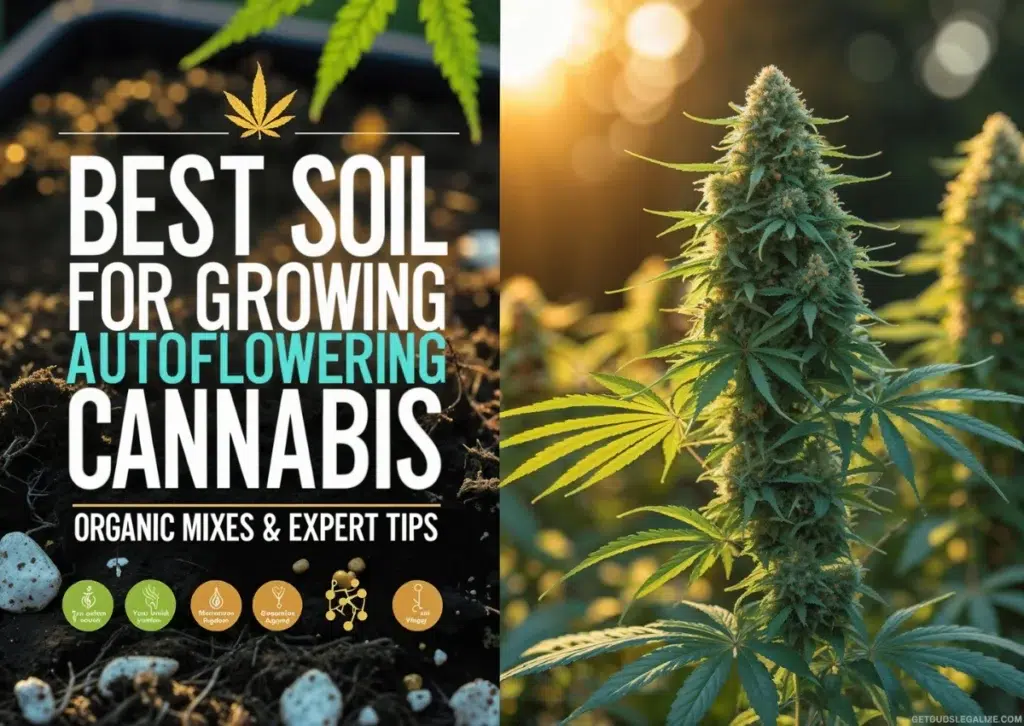Molybdenum Deficiency in Cannabis: Symptoms and Solutions
Molybdenum is a mineral that holds a crucial role in maintaining optimal health and performance of plants. Although many cannabis cultivators have succeeded in yielding crops without ever delving into the details of this mineral, its absence can quickly lead to problems.
In this article, we will explain the importance of molybdenum in the physiology of the cannabis plant, discuss the symptoms, and provide solutions for prevention and treatment.
What Is the Role Of Molybdenum In Cannabis Growth?
For those just starting, learning how to grow cannabis can be an uphill battle. A successful harvest requires a deep understanding of plant physiology, soil biochemistry, and microbiology. This is no small feat, but great results can be achieved with dedication and the right knowledge. While it may seem daunting, the principles behind growing cannabis are simple and your passion for this craft can take you where you want to go.
As you embark on this journey, you will realize that nutrients are essential for healthy plant growth. Nitrogen, phosphorus, and potassium are the three main macronutrients plants need in abundance.
However, focusing solely on these three elements can leave plants susceptible to deficiencies in trace elements like molybdenum, which you may never have heard of before.

Molybdenum Is A Crucial Micronutrient For Cannabis
Molybdenum is a fundamental micronutrient for marijuana plants, belonging to the same category as other essential minerals such as zinc, manganese, and iron. Although plants do not need these nutrients in large quantities, they are equally important as the three macronutrients.
Among other things, molybdenum plays a critical role in helping plants use nitrogen properly. When these elements are deficient, plants lose the ability to use nitrates for the production of proteins, which are essential for significant chemical reactions in plants.
Therefore it is essential to understand the role of this element and the consequences on the plant health of its deficiency.
What Are The Functions Of Molybdenum In Cannabis Plants?
Molybdenum, an essential micronutrient, plays a vital role in the growth and development of the plants of marijuana. This element helps activate crucial enzymes to drive vital chemical reactions in plant cells.
For example, molybdenum cofactors are necessary to activate nitrate reductase, which is involved in the assimilation of nitrates. The element is also necessary for the functioning of other proteins such as sulfite oxidase, xanthine dehydrogenase, and aldehyde oxidase.
Furthermore, it is known that marijuana plants can fix atmospheric nitrogen with the help of bacteria present in their trichomes. Although nitrogen fixation is primarily associated with legume plants, research suggests that cannabis plants can also perform this function.
Bacteria that aid in nitrogen fixation depend on molybdenum nitrate, a protein that contains molybdenum, to fix nitrogen. Overall, the role of molybdenum in the growth and development of cannabis plants cannot be overstated.

What Are The Molybdenum Deficiency Symptoms?
The first noticeable symptom of a molybdenum deficiency in cannabis is yellowing of the leaves, which often starts at the edges and progresses.
As the deficiency progresses, dark spots appear within the yellowing leaves, which not only look unsightly but also affect the leaf’s ability to produce sugars through photosynthesis.
Another symptom of molybdenum deficiency is the curling of the leaves edges, which can get severe in some cases and lead to the plant’s tissue’s death. This can limit photosynthesis, making the plant more vulnerable to infections.
Moreover, molybdenum deficiency in cannabis can cause stunted growth through two major pathways. Firstly, a lack of proper nutrient metabolism interrupts amino acid synthesis and chemical reactions dependent upon proteins (which are built from amino acids). Secondly, the symptoms themselves directly compromise leaf function and reduce sugar production.
Therefore, it is crucial to keep an eye on these symptoms and take appropriate measures to prevent molybdenum deficiency in cannabis plants.
Correlated Article:
Possible Causes Of Molybdenum Deficiency In Cannabis
One of the main reasons for molybdenum deficiency in cannabis plants is excessively acidic soil. The pH level of the soil plays a crucial role in the plant’s ability to absorb molybdenum. Ideally, the pH level should be slightly acidic, around 6.0, for optimal cannabis plant growth. However, if the pH level drops below 5.5, the availability of molybdenum decreases significantly, leading to a deficiency in the plant. To avoid this, growers must monitor pH levels throughout the growing cycle to ensure the molybdenum supply is adequate.
Another reason could be attributed to an excess of iron. Molybdenum and iron are antagonistic, competing for plant uptake. Excessive amounts of iron in the growing medium can limit access to molybdenum, potentially causing deficiency symptoms.
Finally, soil compaction can also contribute to a molybdenum deficiency. The health of plant roots plays a crucial role in the nutrient uptake process, and when the soil is compacted, it can restrict root growth and even contribute to the development of diseases. Diseased and underdeveloped roots are much less capable of absorbing the required levels of molybdenum throughout the growth cycle.
How To Treat Molybdenum Deficiency In Cannabis
It is critical to detect signs of molybdenum deficiency in cannabis plants early to ensure their health and maximum yield. Fortunately, with the utmost care, you can act quickly to restore your plants to their optimal state.
Start by testing your soil’s pH levels with a pH tester. This will give you an idea of how things are going. If your pH level drops below 6.0, you can use a pH-up formula to restore balance.
To quickly provide molybdenum to your cannabis plants, you can directly apply a micronutrient foliar spray to the leaves. This method will provide the necessary nutrients directly to the plant system, bypassing the root system.

How To Prevent Molybdenum Deficiency When Growing Cannabis
When molybdenum nutrient deficiency appears in your plant’s leaves, it may be challenging to address the issue quickly. So, it’s better to learn how to prevent it from occurring in the first place. Here are some useful tips to help you achieve your goal.
Regularly Check and Correct Soil pH Level
This practice will allow you to detect any pH fluctuations early, which can help prevent molybdenum deficiency. By carefully monitoring and regulating, you can ensure that molybdenum remains fully accessible to your plants.
Excess Iron Management
If you suspect there is too much iron in your soil, you’ll want to perform a soil test to confirm the problem. If the test shows an excess, you may consider adding lime to the soil to increase the pH level and reduce the symptoms of iron toxicity to some extent.
Remember to Aerate Your Soil
At the start of the growing season, aim to aerate your soil. Dig in plenty of organic matter and go over your beds with a broad fork to create air channels. If you’re working with soil that has a high clay content, perlite and sand are good amendments.
Choose the Appropriate Fertilizer
Revaluate your fertilizer regimen and select the right fertilizer. If you have experienced a molybdenum deficiency in the past, consider adding a micronutrient blend to your approach. This will provide your plants with a constant supply of molybdenum until harvest.
By correcting pH, iron, and compaction issues, you will ensure your plants grow healthy and lush.
Molybdenum: An Unknown But Essential Micronutrient For Growing Weed
And there you have it: a crash course in molybdenum, the little-known but impactful micronutrient found in cannabis.
Armed with this knowledge, you can now confidently grow healthy, thriving plants. But don’t just take our word for it: continue to explore and learn more about molybdenum and other important micronutrients to ensure the best results for your cannabis.
As the saying goes, “knowledge is power” – use it to your advantage and make your plants grow. As always, happy growing!
Other Common Plant Problems:
- Magnesium deficiency in cannabis
- Phosphorus deficiency in cannabis
- Potassium deficiency cannabis
- Calcium deficiency in cannabis
- Boron deficiency cannabis
- Zinc deficiency cannabis
- Copper deficiency in cannabis
- Deficiency of Nitrogen in cannabis
- Cal-Mag deficiency in cannabis
- Manganese deficiency in cannabis
- Iron deficiency in cannabis
ILGM Fertilizer

- From seedling to harvest, give your plants everything they need.
- Enough for feeding at least 5 plants.
- Discounted Package Deal
- Works well in soil, hydroponics, and other growing mediums.
- The best way to treat your plants
ILGM Plant Protector

- Protect your cannabis from diseases and harmful pests.
- Contains three 20 ml bottles.
- Enough supplies to protect 20 plants.
- It can be used in soil, hydroponic, and all other growing mediums.


















